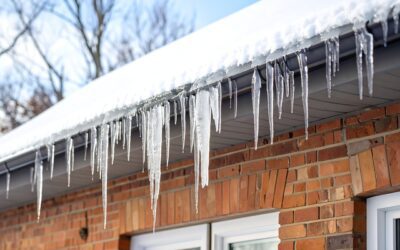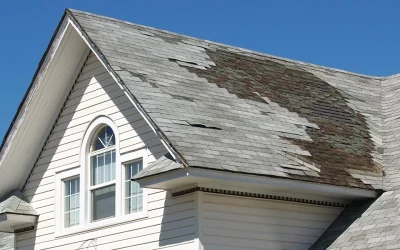Augmented Reality in Roofing: A Look into Virtual Roof Inspections and Repairs
Augmented reality in roofing is revolutionizing the way roofers assess and address issues, providing a more accurate and cost-effective approach. Exploring the benefits of AR in roofing in terms of accuracy, cost-effectiveness, and safety helps to understand why it is becoming an expectation in roofing.
By examining the integration of AR in daily roofing operations and discovering its potential for future growth, you can better understand the capability of AR in revolutionizing the roofing industry.
AR Roofing: An Overview
Augmented Reality is steadily becoming an integral part of the roofing industry, redefining traditional methods of roofing inspection and repair. Known as AR roofing, this technological advancement is enhancing the way we view and resolve roofing concerns.
What AR Roofing Entails
AR roofing involves merging digital elements with the real world to facilitate seamless and precise roofing operations. This can include utilizing AR headsets or even smartphone apps to overlay roofing structure data onto the real-life view of a roof. Roofers can see a detailed representation of the roof’s structure and potential issues, even walking through a virtual simulation of the repair process before the physical work begins.
Integration of AR into the Roofing Industry
The introduction of AR into the roofing industry is marked by an increasing number of businesses adopting this technology to set themselves apart in a competitive market. From small-scale roofing companies to big construction firms, AR is being welcomed due to its potential to simplify complex processes, save time, and reduce the risk of errors.
The Role of AR in Daily Roofing Operations
In the day-to-day operations of roofing professionals, AR provides valuable support. For instance, instead of manual measurements and guesswork, roofers can use AR to get a detailed, accurate, and instant overview of a structure. This allows for precise estimates, efficient project planning, and flawless execution of tasks.
AR also provides real-time guidance during repairs or installation, overlaying the necessary steps and instructions onto the roofer’s view. This not only boosts productivity but also enhances the quality of the final output. Training new staff becomes much more efficient, as they can learn complex procedures via immersive, AR-enabled simulations. This significantly reduces the learning curve and accelerates the onboarding process.
The Process of AR Roofing
The application of AR in roofing involves a few revolutionary steps that enhance the process of inspections and repairs.
Steps in Virtual Roof Inspections Using AR
The AR-aided roof inspection begins with capturing the roof’s images, which is usually done with drones. An AR application then processes these images and produces a 3D model or diagram of the roof, highlighting any potential issues or areas that need attention. Roofers can virtually ‘walk’ on the roof to inspect and identify problems. They can also easily show homeowners the condition of their roof through the AR application.
The Procedure for Roof Repairs with AR
In roof repairs, AR proves to be a game-changer by providing real-time 3D visuals overlaid onto the real roof. It guides the roofer through each step of the repair process, ensuring accuracy and reducing the chances of mistakes. This allows for repairs to be completed more efficiently and safely.
Project Planning in Roofing with AR
AR plays a crucial role in project planning as it provides accurate measurements and assessments without the need for physical access to the roof. This drastically cuts down planning time, and roofers can predict and order the precise quantity of materials required.
The Benefits of AR Roofing
AR roofing possesses numerous benefits that are transforming the roofing industry.
Increase in Accuracy
AR’s highly accurate assessment of roof conditions eliminates guesswork and reduces errors. It guides roofers through detailed repair procedures, ensuring the repairs are done right the first time.
Cost-Effectiveness
AR reduces unnecessary expenses by helping roofers order the exact amount of materials needed, avoiding waste. It also reduces the time spent on inspecting and repairing roofs, saving on labor costs.
AR and Safety
AR improves safety by enabling roofers to identify hazards and plan the work without the need for manual climbing. It also reduces the risk of injury during repairs by providing step-by-step guidance.
The Future of AR Roofing
The future of AR in roofing seems promising, with more advanced applications and widespread adoption expected.
Potential Growth and Advancement
AR is set for rapid growth in roofing, with continuous advancements anticipated in AR software and hardware. Roofing companies that adopt this technology will have a competitive edge in the evolving industry.
Impact on Trends and Strategies
AR could shape future roofing trends, making virtual inspections and repairs the norm. It may also alter business strategies, with companies focusing on customer interaction through AR demos and presentations.
AR roofing marks a significant step forward in the roofing industry, offering numerous benefits in terms of accuracy, cost-effectiveness, and safety. The adoption of AR tools, while a necessity for roofing companies, also benefits homeowners by providing them with a more efficient and reliable service. Embracing this technology will undoubtedly pave the way for a better future in roofing.






